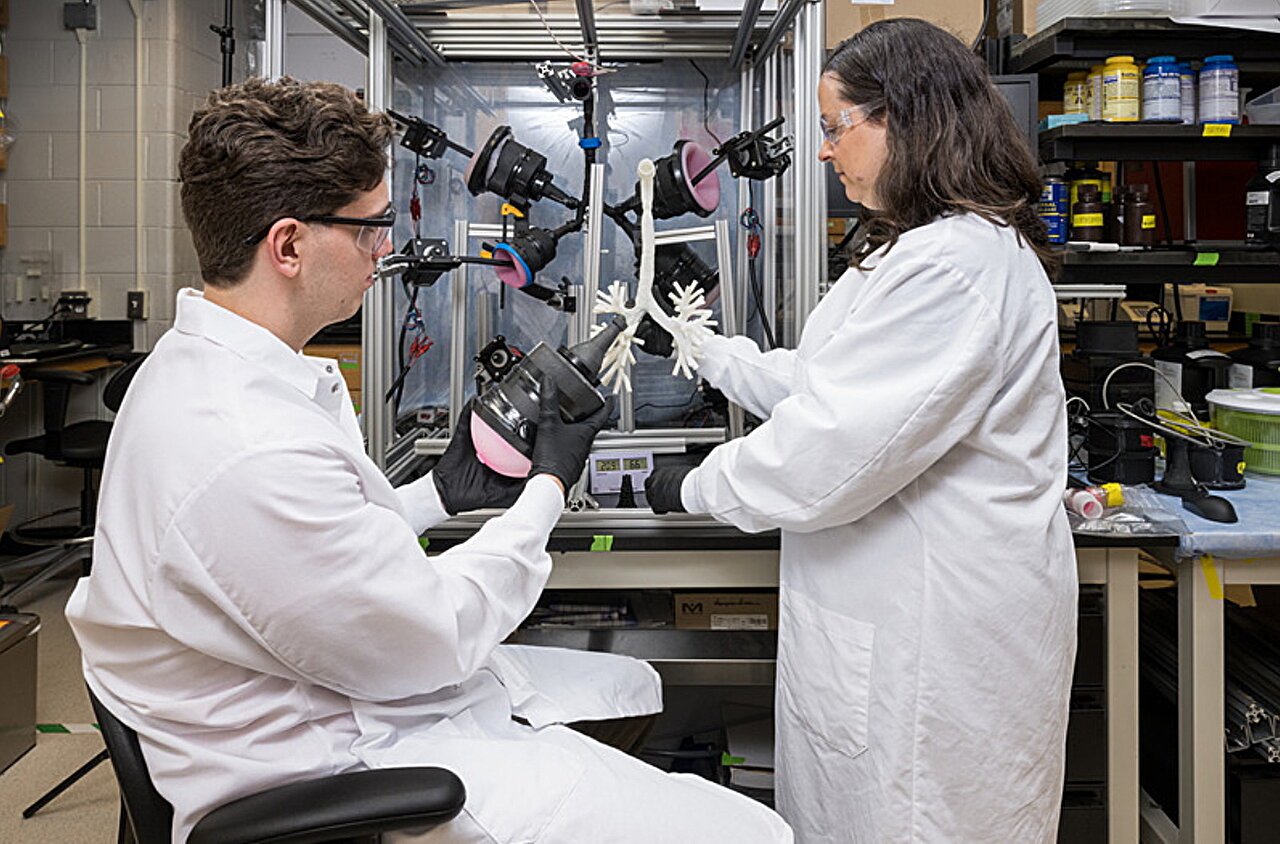Respiratory diseases are a challenging problem to treat. Inhalable medicines are a promising solution that depends on the ability to deliver tiny particles known as aerosols to the correct location in the lungs at the correct dosage.
How effectively this works can get complicated, depending on the drug, delivery method and patient. This is because it is difficult to predict just how much medicine gets in and where it goes in the lung. Similar challenges exist when thinking about measuring an inhaled environmental exposure, say to particles of asbestos or a toxin like smoke. If it’s something environmental and toxic that we’re worried about, knowing how far and how deep in the lung it goes is important.
Fromen and her team demonstrate how their new 3D lung model can advance the understanding of how inhalable medications behave in the upper airways and deeper areas of the lung.


